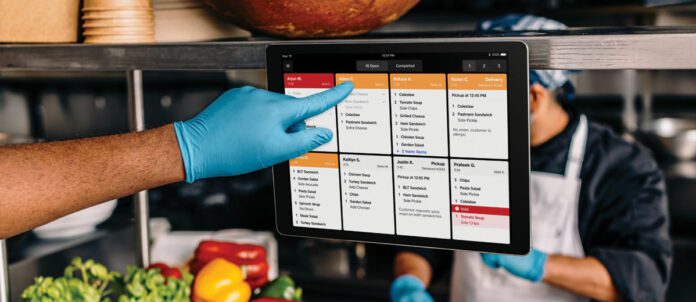From QR code menus to contactless payment, the pandemic spurred a front-of-house technology revolution for many restaurants. As operators continue to grapple with rising costs and labour shortages, however, they’re discovering tech can be equally valuable in solving problems behind-the-scenes, too.
Square’s 2022 Future of Restaurant trend report found that 99 per cent of restaurants surveyed believed increased automation for back-of-house operations would allow staff to focus on more important tasks.
“One of the things we see a lot of is restaurants turning to technology, not necessarily because they want to, but because they have to,” says Bryan Solar, head of Restaurants at San Francisco-based Square. “For a really long time, labour has been the number-1 challenge that restaurants face and that problem has been pretty dramatically exacerbated.”
As restaurants strive to stay afloat with reduced staff, Jordan Huck, CEO of Toronto-based Notch, says automation can free up critical staff time.
“That back-of-house procurement process, it takes chefs out of what they want to be doing and instead, they’re on the phones or on web portals and placing orders out to these wholesale distributors,” he explains. “We can automate all this manual work.” Notch’s software, for example, allows operators to order, invoice and pay for supplies online via a single platform.
As many operators struggle with high staff turnover, Solar notes that intuitive tech-based systems can streamline the onboarding process for new employees. “If it’s a hard system to learn or you’re using a bunch of internal-only lingo, that new hire actually takes a while to ramp up,” he explains. “Whereas with a tech system that makes sense, they walk in and 20 minutes later they’re [saying], ‘I get it. I’m good.’”
Solar adds that smart technology can also make it easier for staff to jump into different roles when needed. “It’s giving people the flexibility to adapt when maybe someone who previously did certain jobs doesn’t show up,” he says. “But also, people that are working, they’re more efficient so that they can crank stuff out faster.”
Square’s kitchen-display system, for example, allows orders to be funneled to specific prep stations. Solar says some operators are leveraging this feature to create separate stations dedicated to dine-in and online takeout orders. “So maybe this part of the kitchen is only fulfilling online orders and we know to put them into boxes instead of plating them,” he explains. “We know all of these things that historically were a lot of manual communication.”
In addition, with the rising cost of ingredients weighing heavily on the minds of many operators, back-of-house tech can also play a role in helping restaurants manage their expenses. Montreal-based Lightspeed recently launched inventory management software, which the company’s general manager of Hospitality, Peter Dougherty, says can aid in cutting costs by minimizing food waste, tracking supplier price changes and evaluating the profit margin on menu items.
Ultimately, the data provided by tech gives operators a powerful tool for decision-making. “We’re trying to take the tools these big companies have access to and make it accessible and understandable for a small business,” says Dougherty.
While implementing new systems can feel intimidating at a time when money and resources are already stretched thin, Solar says integrating back-of-house tech can be a gamechanger for restaurants. “It’s kind of sad because sometimes I’ll go into a restaurant and [saying], ‘you’re doing this on hard mode. It doesn’t have to be this hard,’” he says.
“That fear of change is keeping people in a prison of what they’ve done in the past…A lot of people think of restaurant management as more art than science and I think that’s true, but science also helps a lot.”
By Jessica Huras


















